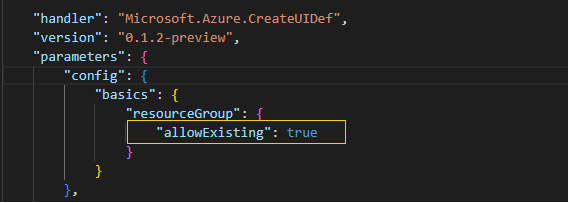Troubleshoot issues while publishing a Kubernetes application-based Container offer
Once published, a Kubernetes application based Container offer goes through the following high level flow for bundle processing.

First, the contents of the Cloud Native Application Bundle (CNAB) are copied from your own registry to a Microsoft-owned Azure Container Registry (ACR). From there, vulnerability scanning is performed to ensure images are secure. Finally, the Kubernetes application is registered as an extension type for an Azure Kubernetes Service (AKS) cluster. If the publish fails, it might be an issue with one of these components. See below for common errors and related mitigation steps.
Publishing fails with missing artifacts in the CNAB
| Error | Description | Action |
|---|---|---|
| "extensionRegistrationParameters cannot be null or empty in manifest.yaml of your package. For more information, see Create the manifest file | Kubernetes applications are packaged as AKS cluster extensions. The manifest file provides input for the Extension Type creation. | Read the description for each property and provide the information. |
| "namespace cannot be null or empty for defaultScope as cluster in extensionRegistrationParameters in manifest.yaml of your package. For more information, see Create the manifest file | Kubernetes applications that are installed at Cluster scope use the default scope provided as the namespace. | Be sure to provide a namespace in the extensionRegistrationParameters section in your manifest file |
Publishing fails while copying the artifacts from your ACR to a Microsoft-owned ACR
| Error | Description | Action |
|---|---|---|
| "Access to registry {sourceACRName} was denied. You must provide MarketPlace access to registry. For more information, see Grant access to your Azure Container Registry | During the publishing process, Microsoft moves your Kubernetes application, which is packaged as a CNAB and uploaded to an ACR, to a Microsoft-owned registry. To do so, Microsoft's first party app responsible for this process must be provided with permissions. This error appears if the Marketplace publishing was done without providing the permissions. |
For more information, see Provide Microsoft's first party app with the proper permissions. |
| "CNAB repository {cnabBundle} cannot be found in registry {sourceACRName}. You must provide MarketPlace access to registry. For more information, see Grant access to your Azure Container Registry | The Kubernetes application packaged using the CPA tool can't be found in your ACR. | Ensure the bundle is successfully uploaded to your registry, and provide Microsoft's first party app with the proper permissions. |
| "The CNAB was updated without updating the version. You must publish again, and increment your version from {latestBundle.tag} to {currentTag.Major}.{currentTag.Minor}.{currentTag.Build + 1}." | A plan with the same version is already published using a different CNAB. | If your CNAB contents changed, increment the plan version and try publishing again. |
Publishing fails with 'ResourceGroup AllowExisting must be set to true in the CreateUIDefinition's config' error
This error occurs if the parameters > config > basics > resourceGroup > allowExisting property in the createUiDefinition.json file doesn't exist or isn't set to true.
To fix this error, ensure the property is set to true as shown in the example below:

By setting the 'allowExisting' property to true, your application can be deployed to a resource group that isn't empty. For a sample CreateUIDefinition file, see the example at createUiDefinition.json.
Publishing fails with Platform errors
| Error | Description | Action |
|---|---|---|
| Internal server error | May be a transient error. | Try publishing again. |
Vulnerability scanning
You might also encounter errors due to vulnerabilities in your images. For more information on vulnerability scanning and how to mitigate issues, see Container certification troubleshooting.